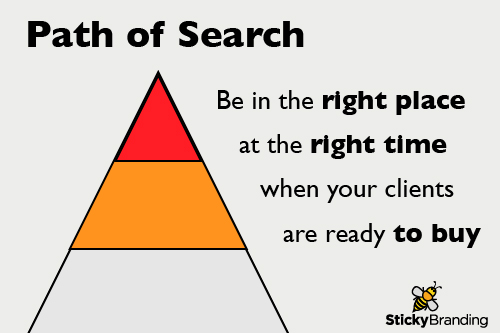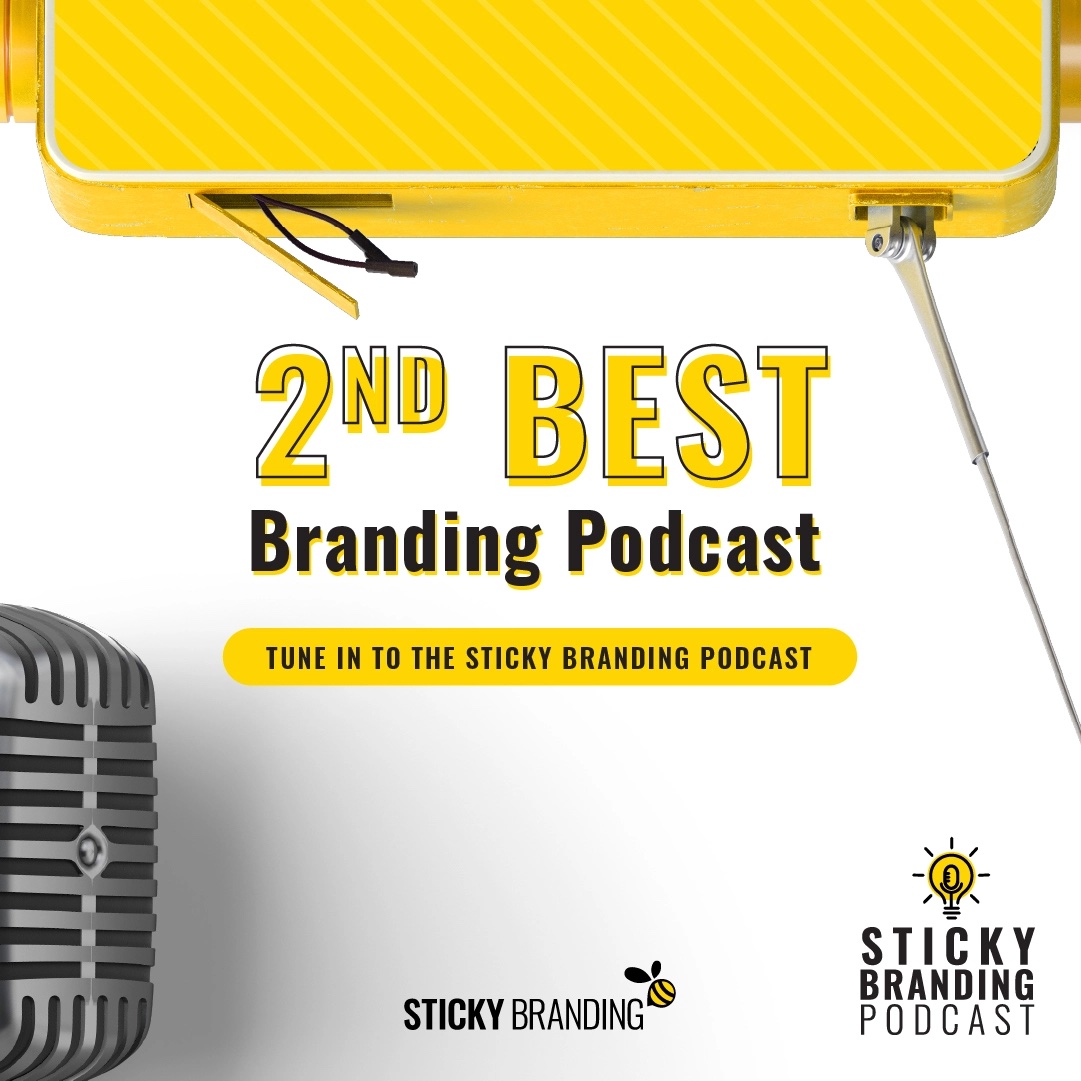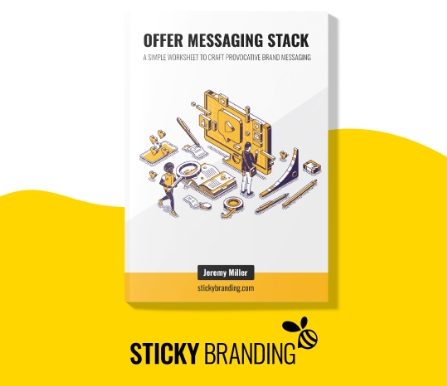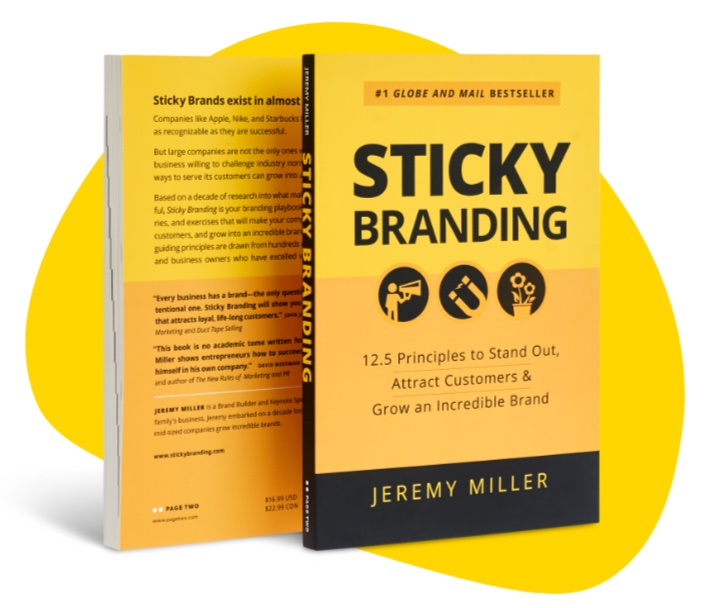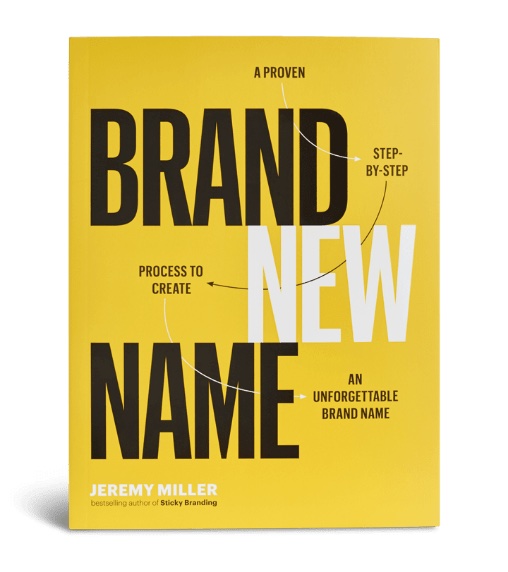(Today’s post is the second in a three-part series titled, Demand Generation: How It Works.)
There is a defined window of opportunity when a prospect has a need. And if your company isn’t visible it probably won’t be considered.
Your challenge is to be in the right place at the right time—your prospects’ Path of Search—when they’re considering their options. This is a major element of a demand generation program.
Demand generation for Path of Search has three components:
- Brand Positioning
- Search Marketing
- Top of Mind Awareness
Brand Positioning (In the language of your customers)
The ability to describe your business simply, succinctly and in the language of your customers—Simple Clarity—is the first step of Path of Search.
In very simple terms tell me who you are and what you do:
- Category: What business are you in? How do your customers reference your products or services? It’s not a fancy or catchy slogan, just plain descriptive words.
- Qualifier: Do you have a specialization? For example, are your clients all in a targeted city or region, or do you work with a specific vertical?
- Benefit: What makes your company and services unique? Why do you do what you do?
The first two components are the most important. Think of them as the label on a file folder. The clearer it is, the easier it is to remember and find.
When you achieve Simple Clarity your brand accelerates. It becomes more findable, referable, memorable and desirable.
Search Marketing (Position for Google)
The next step is to tune your Web presence around your brand positioning, Simple Clarity.
If a prospect searches for your Category and Qualifier on Google, you should come up on the first page. Better yet, you should be at the top of the list.
Tuning your Web presence is more than simply conducting search engine optimization on your site. It’s about taking the phrase, and making it a key component of the digital experience.
When a prospect lands on your site they should understand your brand positioning in less than 5 seconds. The headline of your home page should tell people who you are and what you do. The services pages should repeat this message. And on-and-on.
The clearer you are with your positioning on your site, the better you will do with Google and Bing.
Top of Mind Awareness (Know your customers)
Not all prospects will find you on a search engine. Many will ask friends and colleagues for referrals, or look to see who their competitors are using.
How do your customers search for suppliers? How do they identify products and services in your category?
Demand generation depends on an intimate knowledge of your customers and their buying habits. The more you understand about their Path of Search, the better you can insert yourself into their line of sight.
Again, Top of Mind Awareness is driven from Simple Clarity. It’s the simple, clear explanation of your brand positioning that makes you more findable, referable, memorable and desirable.
Buy your way to the top
In competitive industries you may not be able to get into the Path of Search for free.
Achieving a high organic rank in Google may not be feasible. Or you may not have enough time to network and build relationships so referral partners think of you first.
Unfortunately most good things in life have a price, and demand generation is no different. If you need the phone to ring consistently consider strategies on how you can cost-effectively buy your way into your prospects’ Path of Search.
Action Item
Path of Search starts with Simple Clarity—explaining your brand positioning simply, succinctly and in the language of your customers.
Break down your brand positioning into the 3 components: Category, Qualifier and Benefit. Then search Google using the descriptors:
- Do you come up at the top of the list? If not, what will it take to get onto page one?
- Who else comes up on the search results? Are they your competitors, someone else, or no one at all? If your competition isn’t coming up it could be you’ve got the wrong positioning, or you’re staring at a huge opportunity.
Finally, test your brand positioning. Ask your clients what words they use to describe your industry, and how they would search Google for your products and services.
Stay Tuned
The next article in the series is how to target the Bottom 90% of your market, and create a First Call Advantage. And you can revisit the first article at Demand Generation: How It Works.
Let me know what you think. And feel free to ask questions in the Comments.
